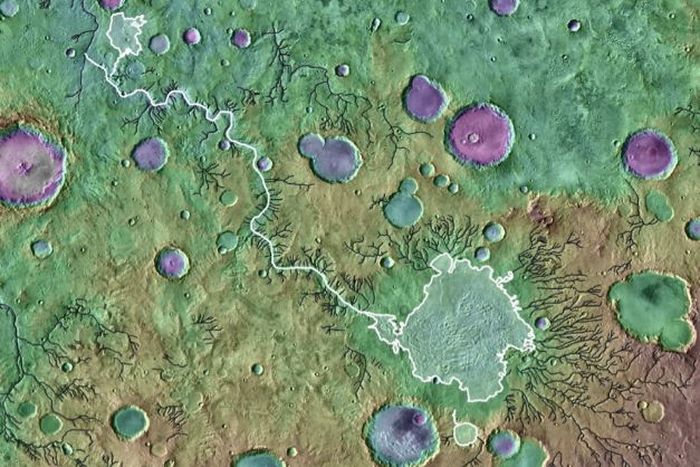THIS
–
Korolev Crater, one of the valleys on Planet Mars
–
Nationalgeographic.co.id—Research reports published in prestigious journals Nature September 29, 2021 revealed that massive flooding from overflowing crater lakes had a big role in shaping the surface of Mars. The flood formed deep ravines and displaced large amounts of sediment.
In the research report, the researchers found that flooding, which may last only a few weeks, erodes more than enough sediment to fill large lakes such as Lake Superior and Lake Ontario in the United States.
Main author Tim Goudge, an assistant professor at the University of Texas at Austin, Jackson School of Geosciences told UT News the findings were a bit surprising. “If we think about how sediment was moved across the landscape on ancient Mars, flooding through lakes was a very important process globally,” Goudge said.
He said it had been considered a one-time anomaly for a long time. But it turns out that what actually happened was not like that. A 2019 study led by Goudge determined that the event happened quickly.
As is well known, crater lakes were common on Mars billions of years ago when the Red Planet had liquid water on its surface. Some craters can accommodate small seawater. But when the water became too much to hold in, it would pierce the crater rim, causing massive floods that carved the river valleys behind it.
Goudge said remote sensing images taken by satellites orbiting Mars have allowed scientists to study the remains of Martian crater lakes. However, the crater lakes and their river valleys have been mostly studied separately. “This is the first study to investigate how the 262 lakes on the Red Planet make up the entire surface of Mars,” said Goudge.
Also Read: Behind the Passion for the Red Planet, Is It Really Not Human Friendly?

NASA
–
Craters and river valleys on the surface of Mars.
–
The research included reviewing a catalog of pre-existing river valleys on Mars and classifying the valleys into two categories. These are valleys that start at the crater rim, indicating that they formed during a lake overflow, and valleys that form elsewhere in the landscape, indicating more gradual formation over time.
The researchers then compared the depth, length, and volume of different types of valleys. The researchers found that the river valleys formed by crater lake fissures far outweigh their weight, eroding nearly a quarter of the volume of the Red Planet’s river valleys even though they comprise only three percent of the valley’s total length.
“The difference is due to the fact that the canyon exits significantly deeper than the other valleys,” said study co-author Alexander Morgan, a research scientist at the Planetary Science Institute.
Also Read: Greenhouse Gases as Fuel for Mars Mission Return

Goudge et al
–
A global map of Mars showing river valleys on the Red Planet.
–
At a depth of 559 feet or 170.5 meters, the average depth of the translucent river valley is more than double that of other river valleys that are made more gradual over time, which has an average depth of about 254 feet or 77.5 meters. . Although chasms appear in geological events in a geological flash, their impact may have lasting effects on the surrounding landscape.
The study suggests that the cracks roamed canyons so deep that they may have influenced the formation of other nearby river valleys. The authors say this is a potential alternative explanation for the unique Martian river valley topography usually associated with climate.
The findings suggest that lakes penetrating river valleys played an important role in shaping the Martian surface. “Earth’s geology has removed most of the craters and made river erosion a slow and steady process in most cases. But that doesn’t mean it will work that way in other worlds,” the researcher said.
Also Read: Dust Storms Play An Important Role In Drying The Red Planet
PROMOTED CONTENT
Featured Videos
– .


